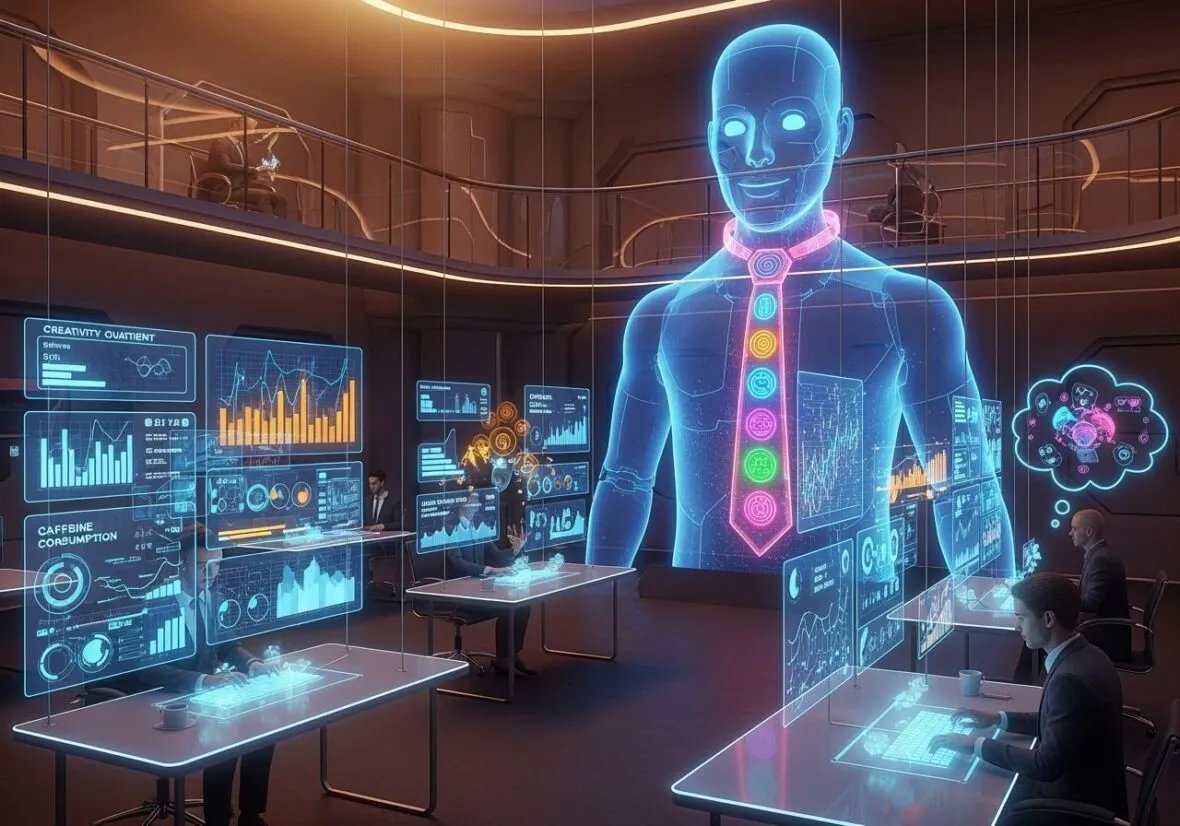Remote work promised freedom; AI surveillance delivered a digital leash. Key-logging, webcam “presence checks,” emotion-scanning dashboards—HR calls it productivity analytics. Employees call it babysitting by algorithm. Here’s what the C-suite won’t put in the slide deck.
🎮 Featured from the Algorithm Archives
You’ve met the smart fork. Ready to see what didn’t even make it to beta?
- AI surveillance = digital babysitting, not productivity.
- Trust tanks; bias scales; workers game the metrics.
- Telemetry today trains the bot that fires you tomorrow.
From Timecards to Telemetry Overload
Old micromanagement: a manager hovering over your cubicle.
New micromanagement: an ML model sampling keystrokes every 15 s, eye-tracking your screen, flagging “idle” if you blink too long.
Market reality
Microsoft Viva, Hubstaff, Teramind—plug-and-play “efficiency scores.”
JPMorgan quietly rolled out keyboard-heat-map audits, then watched workers fire up mouse-jiggle macros to fool the sensors. Surveillance bred spoofing, not productivity.
Trust? Deleted.
Algorithms don’t ask why a coder pauses to think—they see “low activity” and ping the boss. Result:
Creativity tanks (you can’t A/B-test inspiration).
Problems stay buried; no one admits blockers when every keystroke is evidence.
“Always on” culture mutates into pajama-clad burnout.
Gallup 2025: AI-scored teams posted 20 % higher turnover than outcome-measured peers.
The Bias Upgrade
Training data = yesterday’s prejudices.
AI flags Ella (new mom) as “less engaged” because her Slack gaps align with feeding windows; marks Marcus (night coder) “erratic” for 2 a.m. bursts. Pattern-loyal systems scale bias faster than HR can schedule a webinar.
Legal preview: A New York lawsuit alleges gender discrimination after an “objective” dashboard tanked women’s bonuses by 17 % during remote schooling.
Productivity Theater 2.0
Employees game the score:
Micro-tasks & constant pings (green lights) beat deep, silent work.
Hour-long “check-ins” (camera on) outrank three hours of solitary problem-solving.
Dashboards glow emerald; the roadmap slips a quarter.
Who Owns Your Exhaust Data?
Every scroll, typo, and muttered curse funnels to the cloud. Tomorrow that dataset trains an AI to replace the very job it monitored. Fine print says the telemetry is “company property.” Congratulations—you’re feeding your future pink slip.
Legal Whiplash & Global Crackdowns
EU: Draft “Worker Monitoring Act” caps biometric surveillance; fines = 4 % of global turnover.
California: AB-1651 would force employers to disclose every metric collected, down to mouse-movement thresholds.
Shanghai pilot: companies must file AI-monitoring algorithms for public audit—first strike, compliance training; second strike, operating license revoked. Corporate babysitters are about to meet regulatory CPS.
AI’s Growing Influence: Where Does It Stand Today?
global AI adoption in manufacturing
increase in AI-driven marketing tools
growth in AI research funding year-over-year
Employee Counter-Moves: Guerrilla Tactics in Pajamas
Workers aren’t waiting for lawmakers. Popular hacks:
Noise Injection – run background YouTube lectures so speech-analysis tools label you “actively collaborating.”
Time-Split VPNs – bounce traffic through scripted “work bursts” while you make lunch.
Camera Twins – loop a 10-minute video of yourself typing; tilt webcam toward the feed.
When oversight becomes a game, only cheaters level up.
Bottom Line
AI supervision doesn’t fix lazy employees; it manufactures paranoid ones. If companies want real productivity, swap spyware for outcome targets and offer opt-in analytics workers can trust. Until then, welcome to the panopticon in sweatpants.



